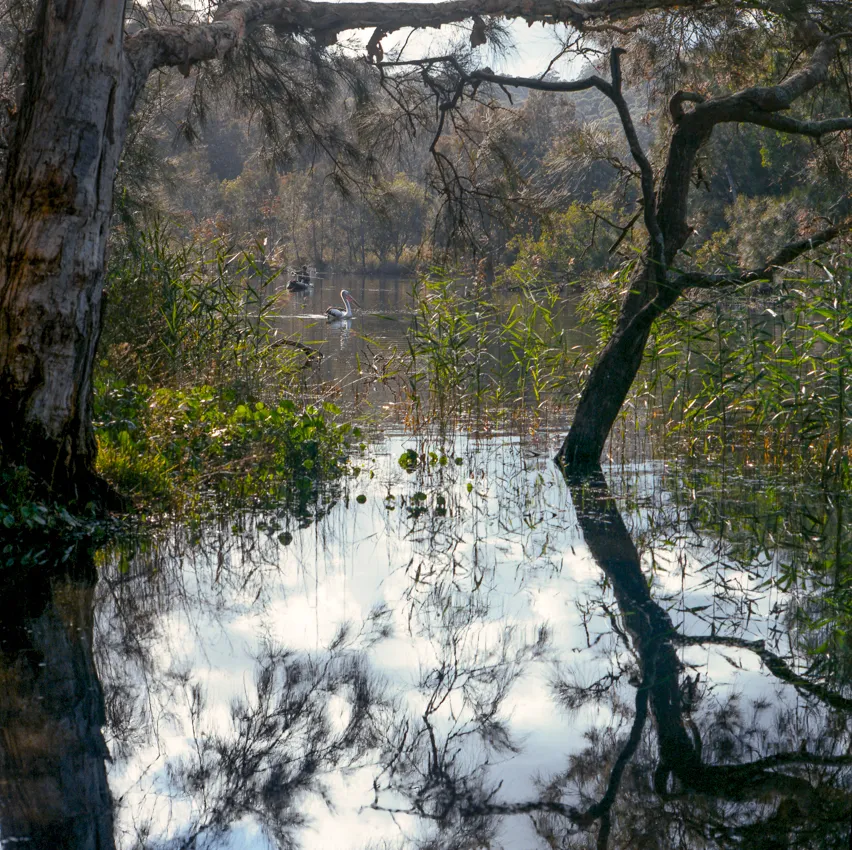Now all that remains of the timber industry is Tramway Road which follows the route of the long gone tramway.
Gum trees have grown up to replace the hardwoods but the lake now is very shallow.In two of the photos below you can see a rope hanging from a tree where boys used to swing out over the lake and jump into presumably reasonably deep water .Today the lake is used by kayakers and people fishing in very shallow draught boats and herons and pelicans.The lake opens onto a beautiful surf beach. It is the stuff of tourist brochures and it is just 5 mins drive from my house -over a very steep hill so it's a pretty arduous walk.
In the past 12 months I have been making occasional trips to the lake in the afternoon with my Hasselblad and a tripod to try to capture the changing moods of the lake on film.The results are below. It's a totally different sort of photography to my usual style but I am very pleased with the results.Film has magical properties.I don't usually like using a tripod but it is necessary when using a Blad for this sort of shooting otherwise focussing on that dim little screen and camera shake are big problems.
Photos taken on Kodak Portra 400 film on a Hasselblad 500 with Zeiss 50mm,80mm and 150mm lenses.








This is one of the Central Coast's hidden secrets. Nicely spotted. Peter E.
ReplyDelete